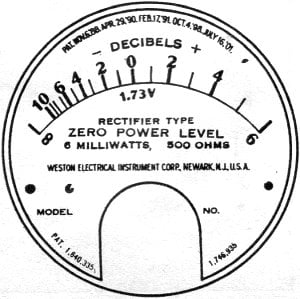Orignially published 4/23/2011
RF and antenna measurement and engineering are replete with deciBels and prolific dB abbreviations.
Measuring Decibels in Antennas
We have dB, dBm, dBi, dBd, dBiC, etc. You'd think all these identifiers refer to specific physically measurable standards. Actually they do, but only indirectly, as the deciBel, one-tenth of a Bel, hence dB, is just a fancy way to refer to the ratio of two quantities (with a logarithm thrown in)!
 Some may say the obfuscation is aimed at keeping out newcomers, a backdoor regulation in the industry. But the real reason is something worth reminding ourselves. The magnitude of the differences in the quantities of electromagnetics and propagation are truly amazing.
Some may say the obfuscation is aimed at keeping out newcomers, a backdoor regulation in the industry. But the real reason is something worth reminding ourselves. The magnitude of the differences in the quantities of electromagnetics and propagation are truly amazing.
Electromagnetics and Propagation
Consider AM radio. Dozens of AM radio stations broadcast using 50,000 watt transmitters. That’s a lot of power.
Expressed in decibels relative to one milliwatt (dBm), it is not quite as impressive a number: 77dBm = 10*log(50000/0.001). But that actually is the point. To convey the ratio of the transmitter’s power and a millwatt without a logarithmic scale, we’d be stuck with a lot of zeros to account for, because the ratio is 50 million!
What about the receiver side? First, the sensitivity that typical receivers need is a signal with power about ten times higher than natural thermal noise level. For normal conditions with, say, 10 kilohertz of AM Radio bandwidth, this minimum signal is about 4 x 10 ^-13 milliwatts or -124 dBm. That’s 0.4 femtowatts, or quadrillionths of a watt, (4 with fifteen zeros before it). An awfully small number.
Amazingly, this minimally detectable signal is twenty-three orders of magnitude smaller (10 ^-23) than the power at the transmitter. Talk about spooky action at a distance.
Mastering the Electromagnetic Spectrum
It is truly a wonder that we have so thoroughly mastered this aspect of electromagnetic force, one of the four fundamental forces of nature, with ever smaller and more efficient electronics…compared to barely controlling the weak nuclear force (think nuclear reactors), let alone exploiting the strong nuclear force, nor the geek Holy Grail -- gravity!




